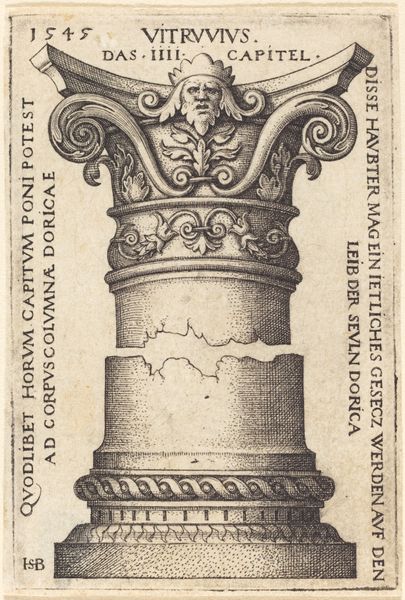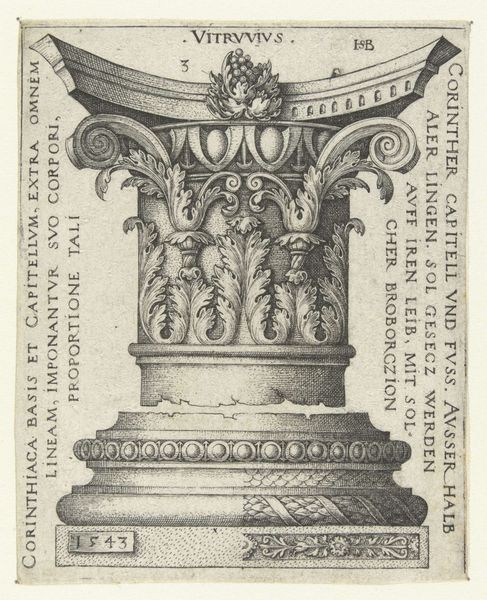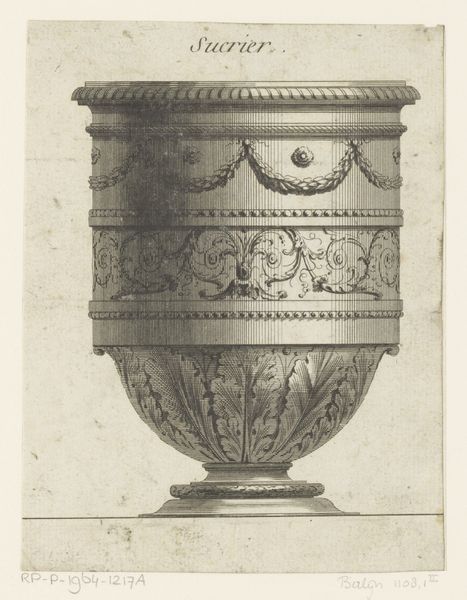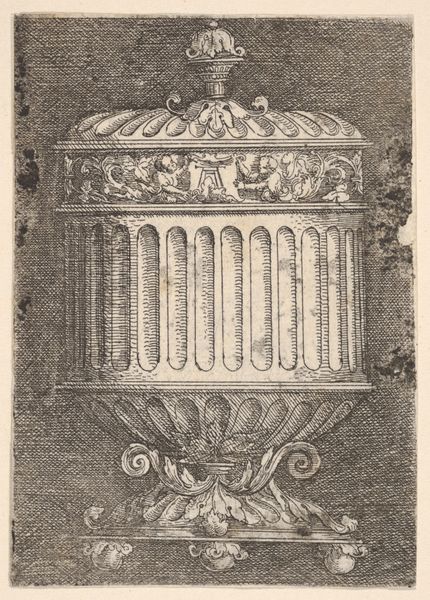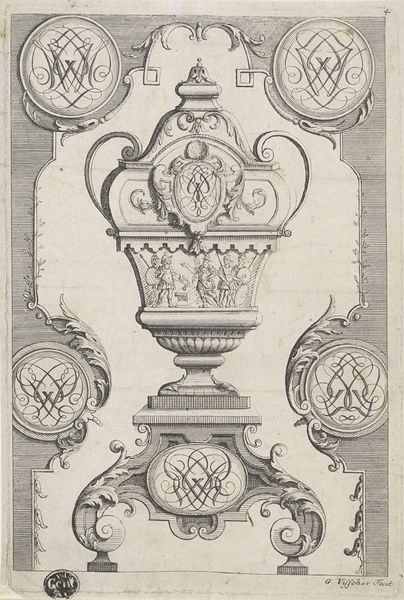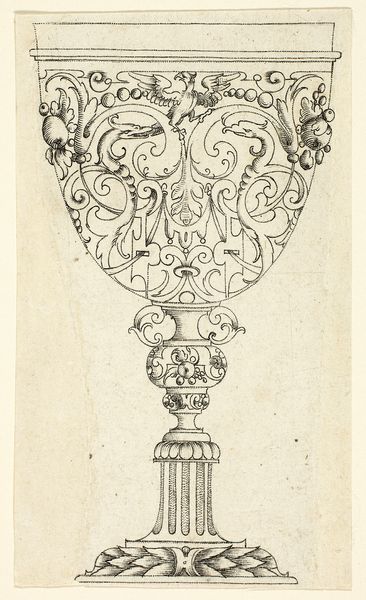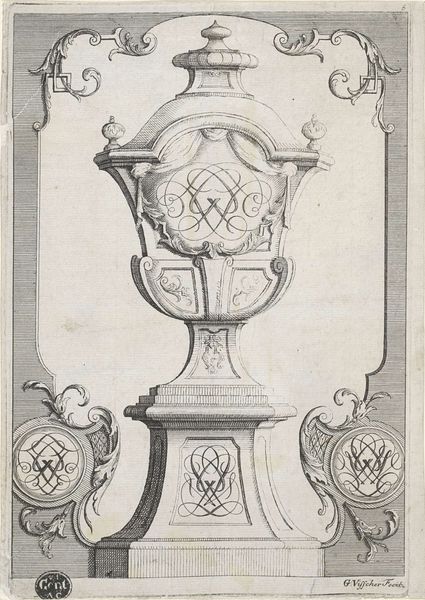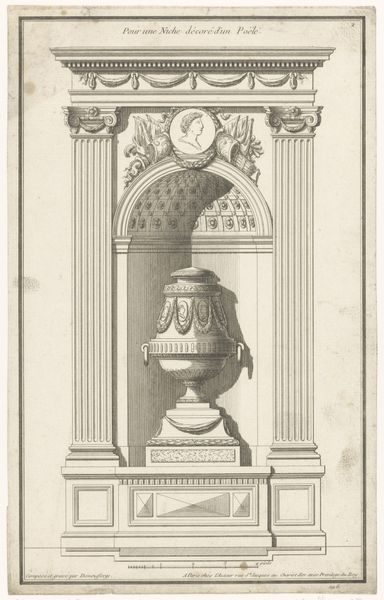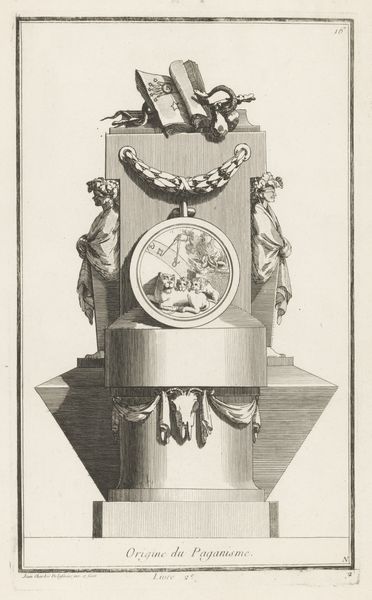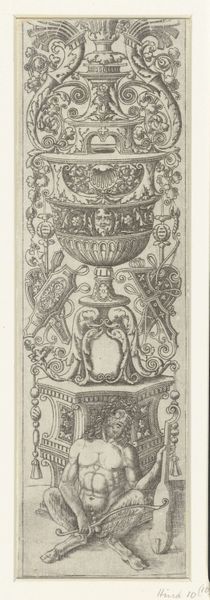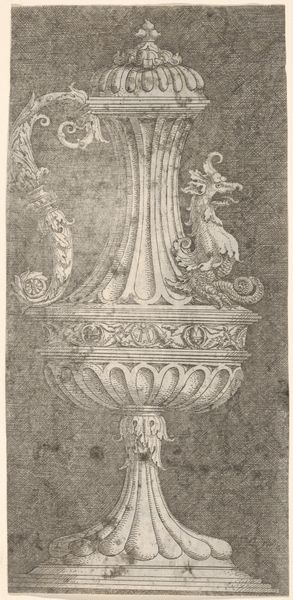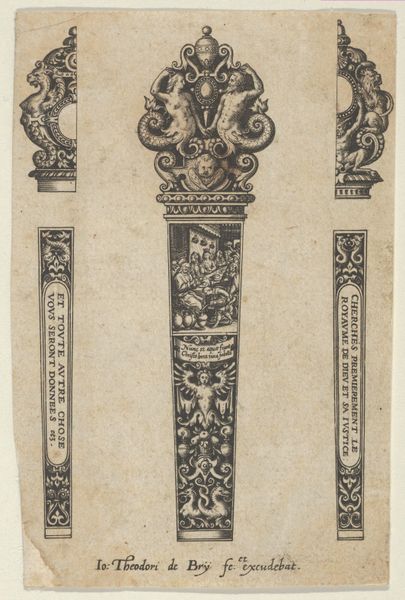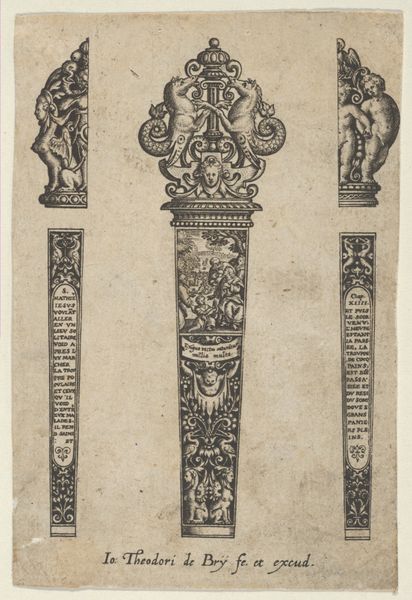
drawing, graphic-art, print, etching, engraving, architecture
#
drawing
#
graphic-art
#
aged paper
# print
#
etching
#
old engraving style
#
figuration
#
line
#
italian-renaissance
#
engraving
#
architecture
#
historical font
Copyright: National Gallery of Art: CC0 1.0
Curator: Let's turn our attention to this striking print: Sebald Beham's "Capital and Base of a Column," created in 1543. What immediately jumps out at you? Editor: It feels both ancient and incredibly playful! I mean, look at those snarling beast heads flanking the top. They're practically gargoyles at a party hosted by someone with serious architectural aspirations, right? The detail is astonishing—almost feels like I could trace every swirling leaf. Curator: Absolutely. Beham was deeply engaged with the humanist revival of classical forms. The inscription 'Vitruvius' refers us back to the Roman architect whose writings became foundational during the Renaissance. Beham is, in effect, creating a visual guide to understanding and deploying these architectural elements, while the writing around the column provides instructions for the use of Doric elements. Editor: Visual guide—I love that. It's like IKEA instructions for Renaissance architects, but way more stylish! I like to imagine that someone back then actually built it. But the fragmentation, like it is breaking apart here between the base and column shaft... Curator: Yes, the fragmentation introduces a poignant tension. On one hand, it serves a practical function in showcasing separate components. On the other, it might subtly symbolize the decay of empires, prompting reflection on power, permanence, and even the sociopolitical fragmentation during the Reformation era. Editor: Okay, the Reformation just dramatically entered the chat. The column, I guess it could have had a message? What would this building or ruin mean? All those leaves, curls and beads give it so much weight. Like holding history itself, you know? I suppose some art and activism were intertwined, in the old days too... Curator: Precisely! Beham’s era witnessed deep religious and political fractures. He, himself, was banished from Nuremberg due to his radical views. So, considering his context and through critical awareness of cultural, social, and political conditions surrounding artistic creation and reception, the artwork prompts essential dialogues on knowledge and power. Editor: Wow, I'm seeing it now. This column is holding up way more than just a building; it is practically the fate of a whole world! And those little beasts? Yeah, okay, I kind of get why they look so angry. So cool. I wish I could get close up and see all of the work. Thanks, man.
Comments
No comments
Be the first to comment and join the conversation on the ultimate creative platform.
